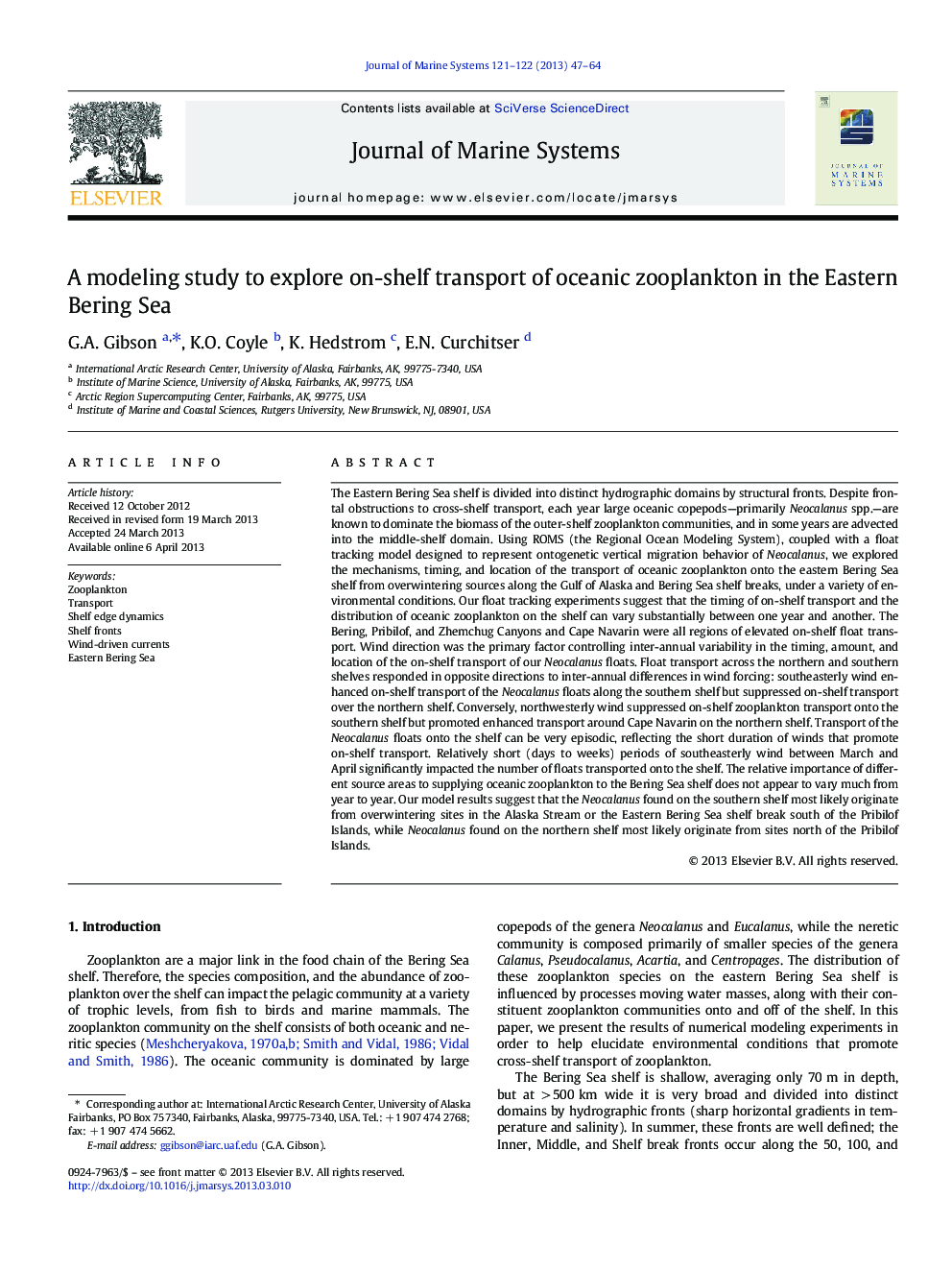| کد مقاله | کد نشریه | سال انتشار | مقاله انگلیسی | نسخه تمام متن |
|---|---|---|---|---|
| 4548102 | 1627306 | 2013 | 18 صفحه PDF | دانلود رایگان |

• Wind direction is the primary factor controlling on-shelf transport of Neocalanus.
• SE wind during March–April increases on-shelf zooplankton transport in the southern Bering.
• NW winds increase on-shelf zooplankton transport in the northern Bering around Cape Navarin.
• On-shelf transport of zooplankton is elevated around canyons and Cape Navarin.
• Source areas for on-shelf zooplankton varied little inter-annually.
The Eastern Bering Sea shelf is divided into distinct hydrographic domains by structural fronts. Despite frontal obstructions to cross-shelf transport, each year large oceanic copepods—primarily Neocalanus spp.—are known to dominate the biomass of the outer-shelf zooplankton communities, and in some years are advected into the middle-shelf domain. Using ROMS (the Regional Ocean Modeling System), coupled with a float tracking model designed to represent ontogenetic vertical migration behavior of Neocalanus, we explored the mechanisms, timing, and location of the transport of oceanic zooplankton onto the eastern Bering Sea shelf from overwintering sources along the Gulf of Alaska and Bering Sea shelf breaks, under a variety of environmental conditions. Our float tracking experiments suggest that the timing of on-shelf transport and the distribution of oceanic zooplankton on the shelf can vary substantially between one year and another. The Bering, Pribilof, and Zhemchug Canyons and Cape Navarin were all regions of elevated on-shelf float transport. Wind direction was the primary factor controlling inter-annual variability in the timing, amount, and location of the on-shelf transport of our Neocalanus floats. Float transport across the northern and southern shelves responded in opposite directions to inter-annual differences in wind forcing: southeasterly wind enhanced on-shelf transport of the Neocalanus floats along the southern shelf but suppressed on-shelf transport over the northern shelf. Conversely, northwesterly wind suppressed on-shelf zooplankton transport onto the southern shelf but promoted enhanced transport around Cape Navarin on the northern shelf. Transport of the Neocalanus floats onto the shelf can be very episodic, reflecting the short duration of winds that promote on-shelf transport. Relatively short (days to weeks) periods of southeasterly wind between March and April significantly impacted the number of floats transported onto the shelf. The relative importance of different source areas to supplying oceanic zooplankton to the Bering Sea shelf does not appear to vary much from year to year. Our model results suggest that the Neocalanus found on the southern shelf most likely originate from overwintering sites in the Alaska Stream or the Eastern Bering Sea shelf break south of the Pribilof Islands, while Neocalanus found on the northern shelf most likely originate from sites north of the Pribilof Islands.
Journal: Journal of Marine Systems - Volumes 121–122, July 2013, Pages 47–64